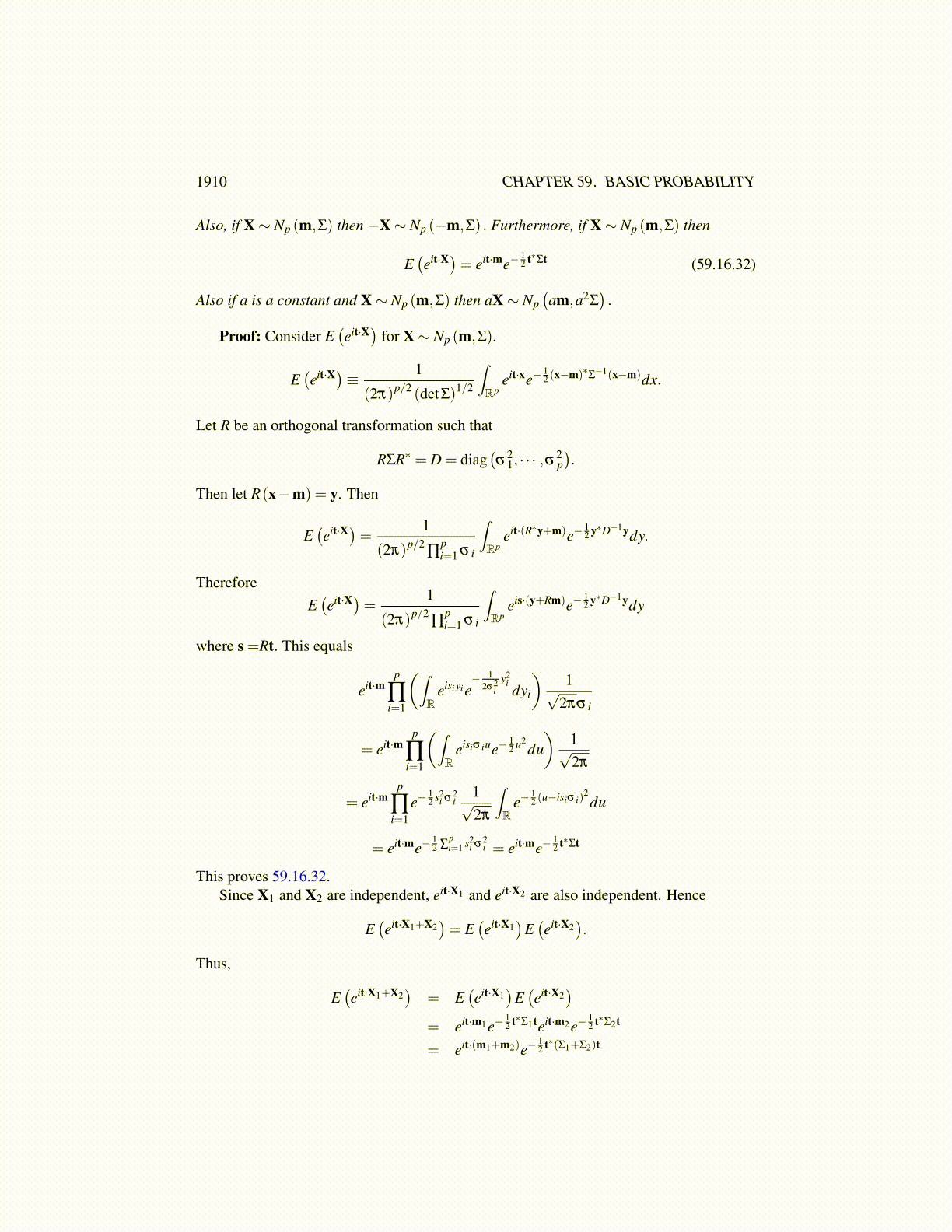
1910 CHAPTER 59. BASIC PROBABILITY
Then in fact,Sk (ω)→ S (ω) a.e.ω (59.15.30)
and off a set of measure zero, the convergence of Sk to S is uniform.
Proof: Let nk ≤ l ≤ m. Then by Lemma 59.15.5
P
([sup
nk<l≤m
∣∣∣∣Sl−Snk
∣∣∣∣> 2−k
])≤ 2P
([∣∣∣∣Sm−Snk
∣∣∣∣> 2−k])
In using this lemma, you could renumber the ζ i so that the sum
l
∑j=nk+1
ζ j
corresponds tol−nk
∑j=1
ξ j
where ξ j = ζ j+nk.
Then using 59.15.29,
P
([sup
nk<l≤m
∣∣∣∣Sl−Snk
∣∣∣∣> 2−k
])≤ 2P
([∣∣∣∣Sm−Snk
∣∣∣∣> 2−k])
< 2−(k−1)
If Sl (ω) fails to converge then ω must be in infinitely many of the sets,[supnk<l
∣∣∣∣Sl−Snk
∣∣∣∣> 2−k
]
each of which has measure no more than 2−(k−1). Thus ω must be in a set of measure zero.This proves the lemma.
59.16 The Multivariate Normal DistributionDefinition 59.16.1 A random vector, X, with values in Rp has a multivariate normal dis-tribution written as X∼Np (m,Σ) if for all Borel E ⊆ Rp,
λ X (E) =∫Rp
XE (x)1
(2π)p/2 det(Σ)1/2 e−12 (x−m)∗Σ−1(x−m)dx
for µ a given vector and Σ a given positive definite symmetric matrix.
Theorem 59.16.2 For X∼ Np (m,Σ) ,m = E (X) and
Σ = E((X−m)(X−m)∗
).